“Put two ships in the open sea, without wind or tide, and, at last, they will come together. Throw two planets into space, and they will fall one on the other. Place two enemies in the midst of a crowd, and they will inevitably meet; it is a fatality, a question of time; that is all.” -Jules Verne
As the final three months of the year begin, it’s again time to look back on the past week here at Starts With A Bang! Lots of exciting stories were met with a number of interesting and provocative comments, which is what I always like to see. Here's what we covered, in case you missed anything:
- What impossible physics would be possible with warp drive? (for Ask Ethan),
- Ultra-deep radio telescope catches what Hubble can't (for Mostly Mute Monday),
- Science is what made America great,
- How do we classify the stars in the Universe?,
- Dark matter faces its biggest challenge of all, and
- How do photons experience time?
Do you notice how, thanks to your comments here, the "Annie Jump Cannon" post -- on stellar classification -- you've been asking for came to fruition? Not a bad outcome, and glad so many of you liked it. That said, let's waste no time and get right into our comments of the week!
From Omega Centauri on different types of fusion: "I haven’t kept up with inertial fusion, but it suffers from the same challenge as magnetically confined fusion, creating and maintaining the target fuel at sufficiently high combination of temperature, pressure and time to get enough fusion to happen."
One of the things I always found interesting about magnetic confinement vs. inertial confinement were how stubborn the two camps were about this being and either/or proposition. What about combining the best of both worlds? There are teams -- although they're very small and underfunded -- taking exactly that approach: with magnetized target fusion. (Image above.) Could this be what leads to a breakthrough? Or is this an even worse dead-end than the either/or approach? I haven't heard anything new about this in about 4-5 years, so any updated information would be very interesting to me!
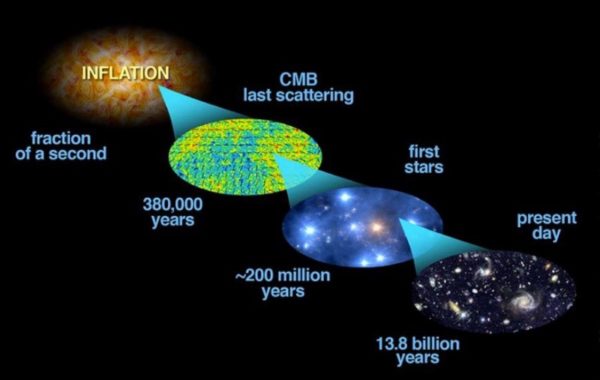 The hot Big Bang resulted from the end of cosmological inflation. But that still required the existence of space, time, and a large zero-point energy. Where did all of *that* come from? Image credit: Bock et al. (2006, astro-ph/0604101); modifications by E. Siegel.
The hot Big Bang resulted from the end of cosmological inflation. But that still required the existence of space, time, and a large zero-point energy. Where did all of *that* come from? Image credit: Bock et al. (2006, astro-ph/0604101); modifications by E. Siegel.
From Sinisa Lazarek on the origin of everything: "That was my argument. The word “nothing” as useful as it is, IMO really has no place here. Because the model that we all believe in clearly says… In the beginning there was a field, and that field was in some space, but things clearly weren’t all good, because then something happened"
When people talk about the origin of everything, they know (i.e., assume) that the "field in space" state we know the Universe possessed at some point in the past isn't adequate as "the beginning" because you can extrapolate it indefinitely to the past. What does that mean? Does it mean that this state really did exist for an eternity? Does it mean (as implied by the Borde-Guth-Vilenkin theorem) that there was a state that began in a singularity prior to this? Or does it mean something else entirely? I will point out that singularities are "events" where space and time can emerge... but did they? And how did they, if so? We can talk about it, but right now there are more questions than answers.
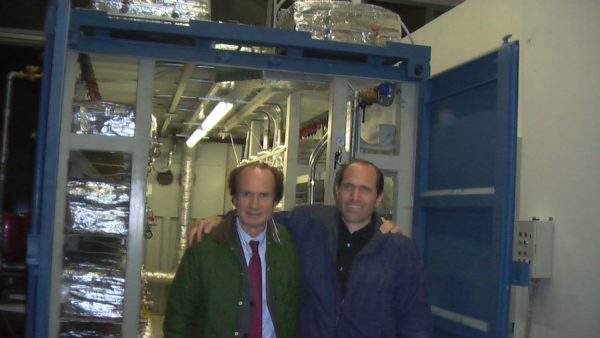 Andrea Rossi and Sterling Allan, during a 2011 demonstration of the E-Cat. Image credit: Sterling D. Allan with Hank Mills of Pure Energy Systems News. Via http://pesn.com/2011/10/28/9501940_1_MW_E-Cat_Test_Successful/.
Andrea Rossi and Sterling Allan, during a 2011 demonstration of the E-Cat. Image credit: Sterling D. Allan with Hank Mills of Pure Energy Systems News. Via http://pesn.com/2011/10/28/9501940_1_MW_E-Cat_Test_Successful/.
From AlainCo on cold fusion: "It is nice to bash the crooks of LENr trying to exploit the dissonance between the clear reality of LENR in the lab, for who can read calorimetry papers, and the denial by the physicist community. [...] You clear seems to focus too much on theory, too much on physics, with too few consideration for history, of chemistry, of epistemology."
So I'll ask you again the same question I've asked you for five years now. What experiment can a scientist set up that will reliably and quantitatively produce the following:
- low-temperature transmutation of elements from light elements into heavy ones,
- where gamma rays are produced,
- where a procedure can be followed and verified independently,
- and where the amount of energy produced can be measured, detected and verified robustly.
None of this "open calorimetry" nonsense. None of this "non-peer review" or "sham peer review" garbage. Like all good physicists -- including many who comment here -- if you say, "do this experiment and you'll see these results," I'm down to say we've got something new and interesting here. I've said that for muon-catalyzed fusion. I've even said that for the latest MOND paper. What makes you think I'm in denial about it for cold fusion, rather than the fact that the cold fusion camp hasn't met the modest scientific standards set by lifetimes of work?
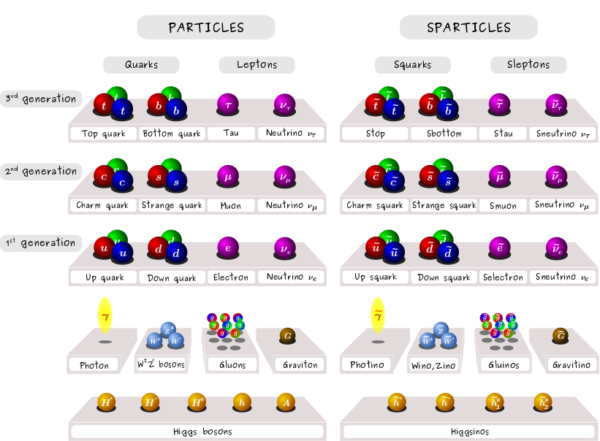 The Standard Model particles and their supersymmetric counterparts. Exactly 50% of these particles have been discovered, and 50% have never showed a trace that they exist. Image credit: Claire David, of http://davidc.web.cern.ch/davidc/index.php?id=research.
The Standard Model particles and their supersymmetric counterparts. Exactly 50% of these particles have been discovered, and 50% have never showed a trace that they exist. Image credit: Claire David, of http://davidc.web.cern.ch/davidc/index.php?id=research.
From Narad on supersymmetric ramblings: "Don’t try telling that to Gordon Kane.
P.S. Has a fresh prediction for the gluino mass been issued this year?"
Gordie's optimism will never be tarnished by the lack of no new particles. He -- and thousands of others -- will go to their graves believing that String Theory and Supersymmetry are inevitable, no matter what nature or experiments say. This is not a unique fault of Gordie's, but rather something we all share. I don't even know where my blind spots are, but I'm sure I have them.
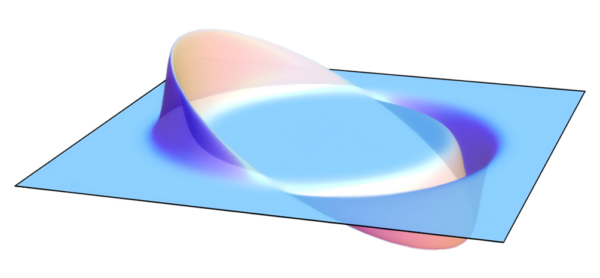 A two-dimensional projection of the Alcubierre spacetime, where space itself is shortened in front of the spacecraft and lengthened behind it. Image credit: Wikimedia Commons users AllenMcC., under a c.c.a.-s.a.-3.0 license.
A two-dimensional projection of the Alcubierre spacetime, where space itself is shortened in front of the spacecraft and lengthened behind it. Image credit: Wikimedia Commons users AllenMcC., under a c.c.a.-s.a.-3.0 license.
From Naked Bunny With A Whip on expanding and contracting space: "I understand that the traveling object isn’t exceeding the speed of light because it is at rest relative to the “bubble” of spacetime it’s within, and it’s the bubble that’s moving. But what I don’t understand is why the bubble itself can propagate faster than light."
You mustn't look at it as a propagating bubble, but rather as an expansion and contraction of empty space itself. Just like in an expanding (or contracting) Universe, there's no "speed" or speed limit at which the expansion (or contraction) happens at -- it's simply a property of the Universe -- so it is in Alcubierre spacetime as well. The "forward" region undergoes a contraction in a particular fashion; the "rear" region undergoes an expansion in a particular fashion; the ship within the "bubble" remains stationary.
I worry that will make sense for exactly as long as it takes you to read that paragraph, and then five minutes later you'll have the same exact question. If so, that means my explanation was probably insufficient.
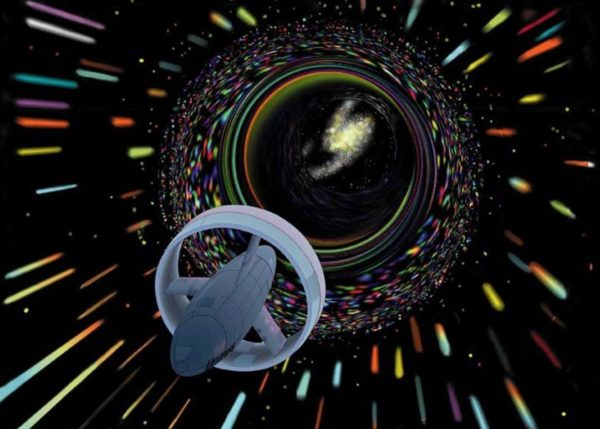 An artist's conception of a starship making use of the Alcubierre drive to travel at apparently faster-than-light speeds. Image credit: NASA.
An artist's conception of a starship making use of the Alcubierre drive to travel at apparently faster-than-light speeds. Image credit: NASA.
From SelfAwarePatterns on warp speed: "One thing I don’t understand is why the Alcubierre Drive doesn’t warp time when it warps space, similar to what happens in the rest of special and general relativity. Since space and time are supposed to be inseparable, it seems like any attempt to contract or expand space would also contract or expand time."
You've got to remember that the only thing experiencing time in the Alcubierre spacetime is the ship and the people on it. For them, and the region they're in, space is asymptotically flat, and they're not moving through it, so clocks run at the rate of one second per second. If you want to talk about time in the expanding/contracting regions, that's a different story, and one that (thankfully) we don't need to calculate!
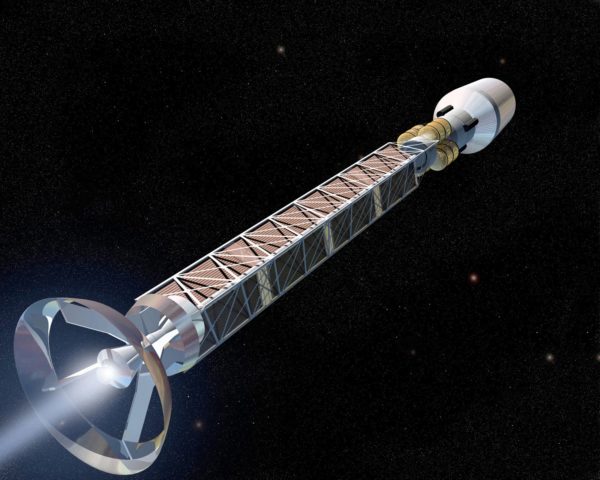 Powered by antimatter technology, a warp drive rocket would not only get arbitrarily close to the speed of light, but could exceed it many times over thanks to bending the fabric of space itself. Image credit: NASA / Marshall Space Flight Center.
Powered by antimatter technology, a warp drive rocket would not only get arbitrarily close to the speed of light, but could exceed it many times over thanks to bending the fabric of space itself. Image credit: NASA / Marshall Space Flight Center.
From Omega Centauri on the possible dealbreaker: "Warp may not violate physics, but if it requires negative mass, that might not exist in our universe."
Done and done. That's right: if we can't cook up negative mass or negative energy, warp drive is a dead-in-the-water idea. So... let's hope nature is kind and that we can!
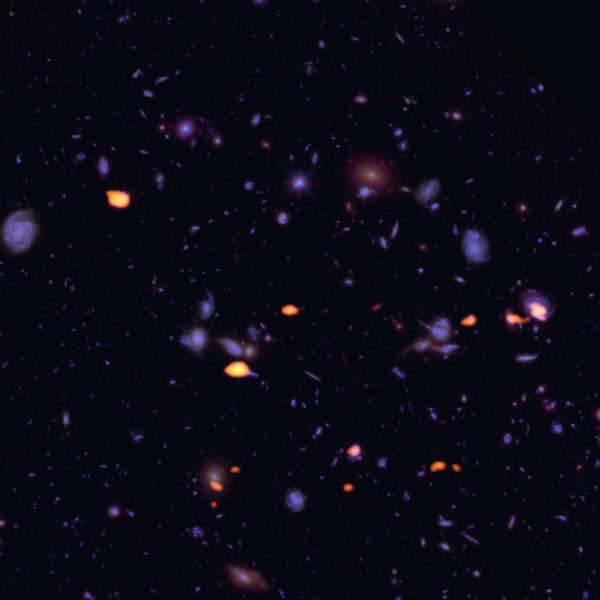 A trove of galaxies, rich in dust and cold gas (indicating star-forming potential) was imaged by ALMA (orange) in the Hubble Ultra Deep Field. Image credit: B. Saxton (NRAO/AUI/NSF); ALMA (ESO/NAOJ/NRAO); NASA/ESA Hubble.
A trove of galaxies, rich in dust and cold gas (indicating star-forming potential) was imaged by ALMA (orange) in the Hubble Ultra Deep Field. Image credit: B. Saxton (NRAO/AUI/NSF); ALMA (ESO/NAOJ/NRAO); NASA/ESA Hubble.
From PJ on the new radio view of the Hubble Ultra Deep Field: "I find it so mind-boggling when I see such photo’s. To realize there is more depth to the universe than we can imagine at one sitting; to comprehend the distances portrayed, then to realize there is so much life out there we shall never meet with."
Remember how small the visible part of the spectrum is. Remember how much stuff there is out there and how complex interactions between matter and light is. Remember all the gravitational signals that are out there and how mind-bogglingly weak the gravitational force is.
Now remember that every particle that moves through spacetime, if you build a big enough detector sensitive to the right disturbances, makes a signal that can be seen. We are still only perceiving the surface of the great cosmic ocean.
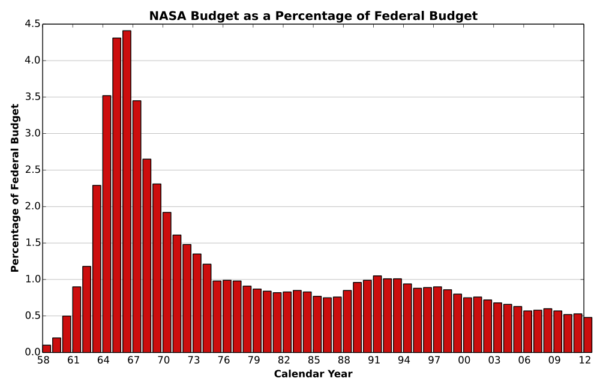 NASA’s budget as a percentage of the total federal budget. Image credit: Wikimedia Commons user 0x0077BE.
NASA’s budget as a percentage of the total federal budget. Image credit: Wikimedia Commons user 0x0077BE.
From klac on science making America great: "How would you suggest integrating scientific principals into the government?"
We could start by funding it. For real. We could continue by having a scientific fact-check for every statement made in either chamber of our lawmaking body of government. And we could make a presidential science advisor as a cabinet-level position. That would be a start. What do you think?
From Denier on a different perspective on America's greatness: "While you seem to focus on the era around World War II, it is worth pointing out that we were a step behind in most scientific schools. Germany had more advanced aircraft, advanced tanks, better guns, more sophisticated communication, and a host other areas. During the war it wasn’t American scientists who cracked Enigma. After the war ended, putting a man on the moon benefited greatly by the inclusion of Wernher von Braun and all the German testing data seized at the war’s conclusion.
The United States won WWII against a scientifically superior foe because of our ability to manufacture in an areas safe from enemy attack and on a scale that could not be matched. Our logistical ability to get those tools of war from factory to front line sealed the deal. I’d argue the Black American Soldiers making up the Red Ball Express played a larger role in winning the war than did the American scientific endeavors of the atomic bomb and penicillin combined.
After the war ended, we plundered every bit of European science we could get our hands on. Europe no longer had the resources to rival us and the Soviets repeatedly shot themselves in the foot with their collectivist economic system."
Much of what you cite may be true, but it's also not the entire truth. Yes, Operation Paperclip -- where we, umm... "utilized" -- some 20,000 Nazi scientists in the United States, was an incredibly important step forward for American research. (It also, arguably, represents an investment in science.) Yes, manufacturing without the fear of bombings or invasion was a tremendous factor in winning World War II (and not having to invest in rebuilding afterwards), so that was important. The bravery and tactical successes of many American battalions -- including the delivery system of Red Ball Express (about which I confess I don't know very much) -- were instrumental in winning the war.
 Flight control room 1 in NASA's Johnson Space Center in Houston, TX. This room is where ISS mission control is, and the image dates from 2006. Image credit: NASA.
Flight control room 1 in NASA's Johnson Space Center in Houston, TX. This room is where ISS mission control is, and the image dates from 2006. Image credit: NASA.
But it's also true that America didn't stop investing in science after World War II; in fact we increased our investment during the 1950s and 1960s. It's no secret that while we were investing in rocketry, atomic technology, space exploration and materials science, we were also spearheading a number of developments that had tremendous civilian impacts, from computers to DARPA projects to LEDs to public safety equipment and much, much more. Here are approximately 20 technologies that came just from the space program.
I won't argue that science is the sole reason America became great. I won't even argue that it's the sole reason that, at one point, America was the undisputed leader in technology, medicine, quality of life and education. But I will argue until the very end that if we want to be those things once again, we need to invest more in science, and that if we don't, we will never be again.
 Annie Jump Cannon sitting at her desk at Harvard College Observatory, sometime in the early 20th century. Image credit: Smithsonian Institution from the United States.
Annie Jump Cannon sitting at her desk at Harvard College Observatory, sometime in the early 20th century. Image credit: Smithsonian Institution from the United States.
From Michael Kelsey on Annie Jump Cannon's story and contributions: "It’s always a pleasure to learn something new. The really cool (pun always intended!) correlation between class name, temperature, spectral features, and size helps me to understand that it’s not as arbitrary as it seems (although the strange non-alphabetic ordering is a nice example of evolution in action)"
It's also interesting to consider what's important in determining "what type of star are you"? Looking at a star's color is helpful -- that's how we get OBAFGKM -- but why are there seven classes, and not more or fewer? What does color tell you? Why do stars of all these classes come in such different sizes?
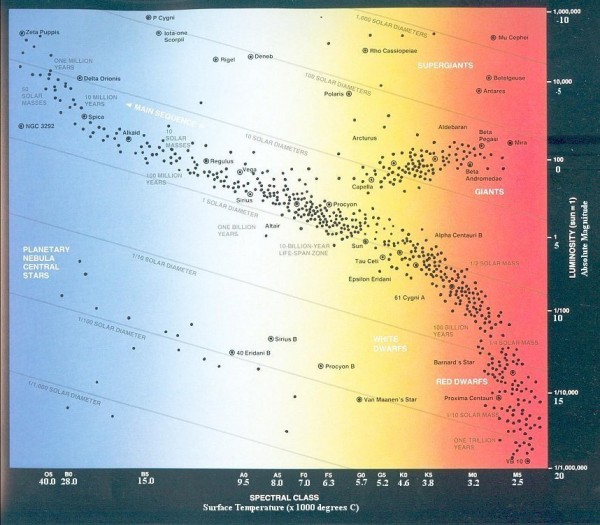 Image credit: Hertzsprung-Russell diagram retrieved from http://universe-review.ca/.
Image credit: Hertzsprung-Russell diagram retrieved from http://universe-review.ca/.
We may understand stars a lot better today, but the science of what people were doing more than 100 years ago was all the more amazing when you consider that they didn't even know what stars were made out of or what nuclear fusion was! Somehow, the classification system they figured out based on what they did know -- O0 through M9 -- is still in use today. Not bad!
From Narad on jobs today: "I sometimes wish that I lived in an era when one could take a decade off and then promptly return to the task of one’s original training."
We kind of do, although it's not easy. I have some ideas -- and I only get a good idea once every few years and this is it -- for how dark matter might be able to explain the galactic rotation situation we have here. I have the ability to get back to that task, but not the time, and there aren't so many people lining up to pay me to work on it. So it's not easy, but the ability stays with you, and that's an important thing to remember. There are a lot of people who will limit the world's perception of your abilities to "what are you doing right now," rather than what you can do. But that does not really limit you intrinsically; don't let them fool you.
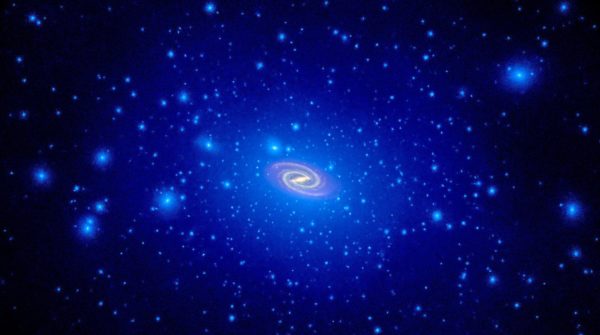 A clumpy dark matter halo with varying densities and a very large, diffuse structure, as predicted by simulations, with the luminous part of the galaxy shown for scale. Image credit: NASA, ESA, and T. Brown and J. Tumlinson (STScI).
A clumpy dark matter halo with varying densities and a very large, diffuse structure, as predicted by simulations, with the luminous part of the galaxy shown for scale. Image credit: NASA, ESA, and T. Brown and J. Tumlinson (STScI).
From Omega Centauri on the dark matter problem: "Ethan can you clarify something, does the statement that you only need to know the distribution of normal matter to predict the gravitational acceleration, imply (1) you don’t need any DM in the interiors of galaxies there is enough normal matter to explain the rotation curve. or (2) It works if we assume some universal “ratio” of DM to baryonic matter?"
What does it mean that "the rotation curves we see are entirely predictable from the normal matter's distribution?" The answer is neither of the statements you make. It means that, if we take a look at the mass that the normal matter provides, we still wouldn't be able to explain, gravitationally, what we see. We'd see faster speeds towards the galaxy's center and slower speeds as we move farther and farther out. That part's not changing at all.
 The correlation between gravitational acceleration (y-axis) and the normal, baryonic matter (x-axis) visible in an assembly of 153 galaxies. The blue points show each individual galaxy, while the red show binned data. Image credit: The Radial Acceleration Relation in Rotationally Supported Galaxies, Stacy McGaugh, Federico Lelli and Jim Schombert, 2016. From https://arxiv.org/pdf/1609.05917v1.pdf.
The correlation between gravitational acceleration (y-axis) and the normal, baryonic matter (x-axis) visible in an assembly of 153 galaxies. The blue points show each individual galaxy, while the red show binned data. Image credit: The Radial Acceleration Relation in Rotationally Supported Galaxies, Stacy McGaugh, Federico Lelli and Jim Schombert, 2016. From https://arxiv.org/pdf/1609.05917v1.pdf.
But if you take a look at what we do see -- at the gravitational mass due to normal matter -- there's a distance-independent factor you can throw in to obtain the acceleration you observe. This is a correlation, not an explanation. At large baryon-induced accelerations, that factor goes to one; at small accelerations, the factor gets larger. Is this due to dark matter? Maybe, but if so, it's not clear how. Is it due to gravitation being wrong? Maybe, but if so, it's not clear how.
That's where we stand in this game!
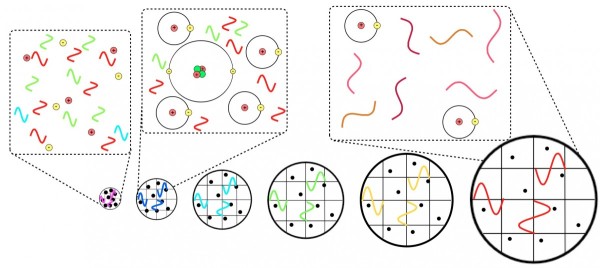 After the Universe’s atoms become neutral, not only did the photons cease scattering, all they do is redshift subject to the expanding spacetime they exist in, diluting as the Universe expands while losing energy as their wavelength continues to redshift. Image credit: E. Siegel, from his book, Beyond the Galaxy.
After the Universe’s atoms become neutral, not only did the photons cease scattering, all they do is redshift subject to the expanding spacetime they exist in, diluting as the Universe expands while losing energy as their wavelength continues to redshift. Image credit: E. Siegel, from his book, Beyond the Galaxy.
From AC on a photon's 'experience': "I thought photons got redshifted (or blueshifted) as they moved through space – is that not some kind of aging?"
It is some kind of aging... from our perspective. But what does the photon experience? There is no way it can measure or detect its own energy, its wavelength or its oscillations. All it can "see" is that the distances in its direction-of-motion are contracted down to zero and that time is dilated to infinity; it's effectively experiencing its entire journey in an instant. So no, from a photon's perspective, it's not aging.
And finally, from Eric on the same topic: "AFAIK the E and B field components of the photon oscillate as it travels, with the formulae given as E(x,t) = Emaxcos(kx – ωt + φ), B(x,t) = Bmaxcos(kx – ωt + φ).
If t for the photon was zero for the entire journey, there would be no oscillation. But there is oscillation, given by the t of the observer. So the photon must be, in some respect, experiencing time."
The answer I gave above applies almost exactly to your comment as well. When we do physics -- and the more you do it, the more you experience this -- there are all sorts of valid, reasonable approaches we can take to a problem, but not all of them will give you the capability of solving that problem in any reasonable manner. If you decide to move at the speed of light, that is something you'll face. Things that are dependent on space and time stop making sense, and give you annoying answers like "zero," "infinity" or "undefined." And that is what you get for everything in relativity if you try and ask, "what does the photon experience?"
The answer to this question is, quite simply, not time. Or, you know, like the old Niels Bohr retort to Einstein's statement that God does not play dice with the Universe: "Einstein, stop telling God what to do."
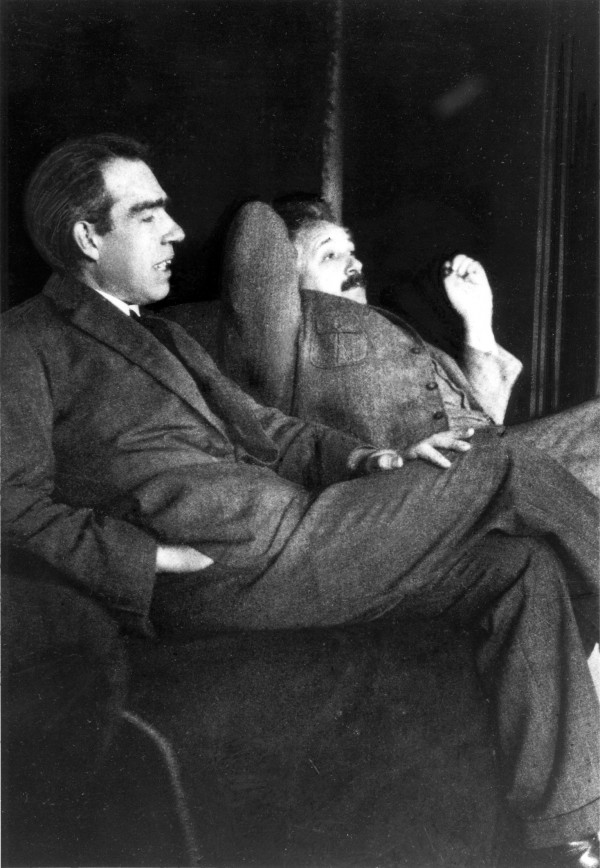 Photo by Paul Ehrenfest, in December of 1925. If you are having a geekgasm right now, you may secretly be a physicist.
Photo by Paul Ehrenfest, in December of 1925. If you are having a geekgasm right now, you may secretly be a physicist.
Thanks for a great week everyone, and I'll see you back here now that October's rolled around for more on Starts With A Bang!

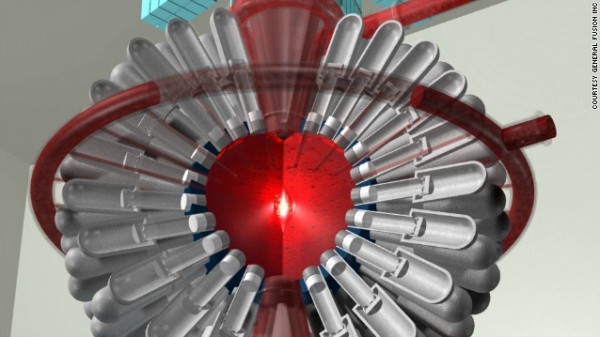

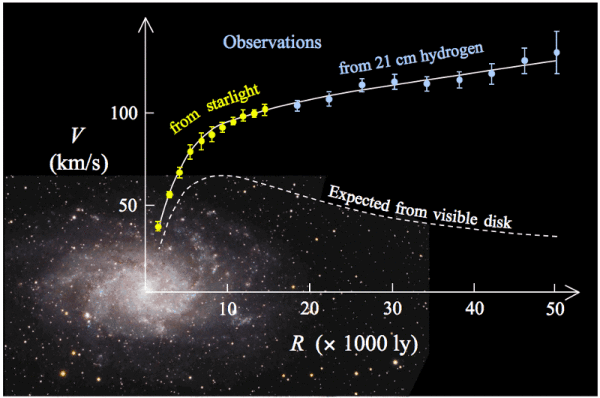
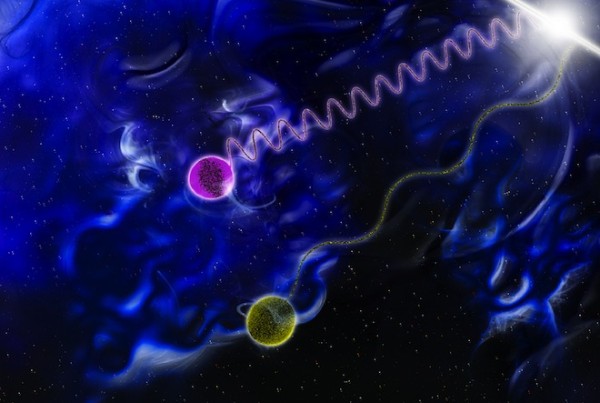
Do not these faster than light warp drive flights allow you to violate causality?
Well, Cannon's mnemonic – which I thought about mentioning earlier – was eventually extended to "Oh, be a fine girl, kiss me right now, smack" (with variations in the last word).
And/or sartorial interests. I really need a new suit.
@ziggurism #1: They allow you know that an event occurred before its light can reach you, but they don't allow you to prevent that event from occurring. Causes still precede effects.
My problem is that I think of gravity waves as an expansion and contraction of empty space, too, and I can't make the connection between a large-scale phenomenon like the expanding universe with a local event like turning on an Alcubierre drive.
I appreciate your efforts, but this just sounds like one of those things where I'd have to understand the math to make sense of it.
Simplistically,* one is talking about changes in the metric, which yields "distance." LIGO is detecting near-to-each other changes** in a pretty well behaved local frame. (There's a reason that "the width of a proton" is bandied about on this front.)
The negative mass/energy needed to get the Alcubierre metric to work, on the other hand, implies a pretty dramatic change to the value of "distance," but I don't think there's a fundamental difference, and I hope to be promptly corrected if I'm way off course.
* I.e., my own level.
** OK, phase.
Thanks Ethan. I have to admit I had a misconception about the Alcubierre Drive. I thought it was contracting space in front of it, traversing that contracted space, then uncompressing that space behind it.
But instead it sounds like it's contracting all the space between its start point and destination, and leaving it contracted, while expanding the space behind it, and leaving it expanded. It seems like the interstellar medium in front of it would get mashed up in into a mini big-bang type fireball while anything behind it would be utterly ripped apart.
What if the AD ship didn't bother to expand the space behind it, and just decided to leave its launch and destination sites close to each other? This seems like a recipe to conceivably really mess up the universe.
It just has occurred to me that I'm utterly clueless when it comes to the question whether the Alcubierre bubble would itself produce gravitational waves at some point.
It's not up to the ship, it's up to the solution of the GR field equations.
Photons travel null geodesics and so do not have an associated proper time. But QED time isn't GR time.
Not quite on topic, but worth a look:-
http://apod.nasa.gov/apod/astropix.html
for Sept. 3
:)
@ Naked Bunny #5
Now that my mind had time to digest this... here's maybe something that can help.
Take a look at first image in the post (the Enterprise in the warp bubble). And let's say that the contracting and expanding regions (to the left and right) are asigned + and - signs. In order to produce gravitational waves, the + and - region would have to rotate around each other, and do it fast. That's how grav. waves are generated (it could be ++ or -- or anything... as long as they are regions of sufficient gradient). That, or have the warp drive "pulsate" one region.. like turning on and off i.e. the contracting region. That will create a wave. Since warp drive only creates a state once and maintains it through the length of flight, no wave is formed, because there is no motion or change about the +and - side.
So that would be my input why it's different than grav. wave.
"True that. Its worth pointing out that for-profit drug companies invest (IIRC) between 10% and 20% of their profits back into their basic research."
Though they spend twice as much on marketing the drugs.
Moreover, they get to load the cost of failures (even failure to reach a profit level) on the cost of their successful drugs,therefore there's nothing to dive out the incompetent and reward efficiency and accuracy.
"AIUI photons actually, observably, and empirically oscillate their B and E fields as they travel."
B fields are the result of the limit of the speed of light causing a relativistic delay between a moving charge and a similar charge "seeing" the movement and responding to the change in charge location.
From a purely wave POV, the B field is caused by the E field and moves away from the charge field caused by the photon forward and backward. That B field changes the E field forward and backward, and that changed E field changes the B field at these locations and propagages forward and backward.
And since these fields are destructive, the field caused at the location AND at the locations ahead and behind, the result of the E field propagates the associated B field constructively forward only. And vice versa for the B field.
One causes the other and their causation propagates forward or cancels out to a non-EM field of a static charge. And in the latter case, the field decays down. And that's the field that causes spontaneous emission of photons from an excited atom, without which background field, no decay would be possible.
Mike can go into how the fields work in maths, I just know some of the words.
Oh, and another thing to note is that "time doesn't exist for the photon" is actually that time doesn't pass in moving from beginning to end for the photon. The moving electron charge still oscillates in its own frame of reference, and that DOES take time. A photon that lasts 100 waves will take zero time to go from A to B, but will STILL have 100 waves. Indeed if that were not true, you wouldn't get redshift, since you'd have an undefined 0/0 and have to work out how those zeros arise to work out the observer reference frame's wavelength.
Thanks Narad #10,
So, are you saying that the GR solution that allows the warp drive requires that space behind the ship be expanded if the space in front is being contracted? Just making sure I understand.
I appreciate the Alcubierre discussion. It's helped me form a picture of what's going on.
It's unfortunate (though understandable) that the drive is often compared to Star Trek warp drive, because that's a bubble that moves faster than light through a congruent domain. The Alcubierre is a bit more like the "space-folding" idea that briefly collapses the space between point A and B, allowing the ship to traverse the distance in a short time, before unfolding space back to normal. Except the "folding" and "unfolding" in the Alcubierre drive all happens at once.
"The Alcubierre is a bit more like the “space-folding” idea that briefly collapses the space between point A and B"
Yup, or any other topological change that allows a "short cut".
Thanks for confirming that I'm at least squinting at the right concept now, Wow.